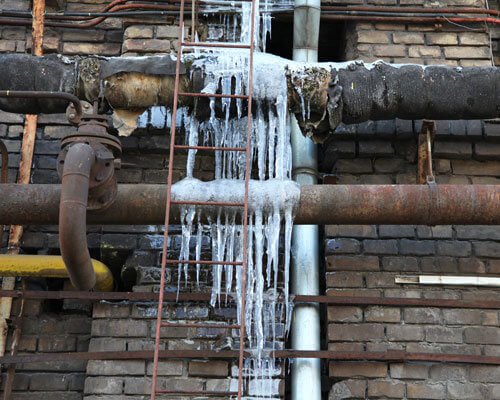Guidance for Preventing Frozen Pipes in Cold Weather: Specialist Tips
Guidance for Preventing Frozen Pipes in Cold Weather: Specialist Tips
Blog Article
What're your insights and beliefs about How to Prevent Your Pipes From Freezing?

Winter can wreak havoc on your pipes, specifically by freezing pipes. Below's just how to prevent it from happening and what to do if it does.
Introduction
As temperatures decline, the threat of icy pipelines increases, possibly causing pricey repair work and water damages. Understanding how to avoid icy pipes is crucial for home owners in chilly environments.
Recognizing Frozen Pipelines
What causes pipes to ice up?
Pipelines freeze when subjected to temperatures below 32 ° F (0 ° C) for prolonged periods. As water inside the pipes ices up, it broadens, putting pressure on the pipeline walls and possibly creating them to burst.
Dangers and problems
Frozen pipes can result in water supply disturbances, home damage, and expensive repair services. Ruptured pipes can flood homes and create considerable structural damage.
Signs of Frozen Pipeline
Recognizing icy pipes early can stop them from rupturing.
How to identify icy pipelines
Try to find decreased water circulation from taps, unusual smells or sounds from pipes, and visible frost on exposed pipes.
Prevention Tips
Shielding vulnerable pipes
Wrap pipes in insulation sleeves or make use of warmth tape to secure them from freezing temperature levels. Focus on pipelines in unheated or exterior areas of the home.
Home heating techniques
Keep interior spaces sufficiently heated up, especially locations with plumbing. Open cabinet doors to permit cozy air to distribute around pipelines under sinks.
Securing Outdoor Plumbing
Garden tubes and outdoor faucets
Disconnect and drain pipes yard tubes prior to winter. Mount frost-proof spigots or cover outside faucets with protected caps.
What to Do If Your Pipes Freeze
Immediate actions to take
If you presume frozen pipes, keep faucets open to ease stress as the ice melts. Utilize a hairdryer or towels soaked in warm water to thaw pipelines gradually.
Long-Term Solutions
Structural changes
Take into consideration rerouting pipelines away from outside wall surfaces or unheated locations. Add added insulation to attic rooms, cellars, and crawl spaces.
Updating insulation
Purchase high-quality insulation for pipelines, attic rooms, and walls. Correct insulation helps keep regular temperatures and minimizes the danger of icy pipelines.
Verdict
Stopping frozen pipes needs positive actions and quick reactions. By comprehending the reasons, indicators, and safety nets, homeowners can protect their plumbing during cold weather.
5 Ways to Prevent Frozen Pipes
Drain Outdoor Faucets and Disconnect Hoses
First, close the shut-off valve that controls the flow of water in the pipe to your outdoor faucet. Then, head outside to disconnect and drain your hose and open the outdoor faucet to allow the water to completely drain out of the line. Turn off the faucet when done. Finally, head back to the shut-off valve and drain the remaining water inside the pipe into a bucket or container. Additionally, if you have a home irrigation system, you should consider hiring an expert to clear the system of water each year.
Insulate Pipes
One of the best and most cost-effective methods for preventing frozen water pipes is to wrap your pipes with insulation. This is especially important for areas in your home that aren’t exposed to heat, such as an attic. We suggest using foam sleeves, which can typically be found at your local hardware store.
Keep Heat Running at 65
Your pipes are located inside your walls, and the temperature there is much colder than the rest of the house. To prevent your pipes from freezing, The Insurance Information Institute suggests that you keep your home heated to at least 65 degrees, even when traveling. You may want to invest in smart devices that can keep an eye on the temperature in your home while you’re away.
Leave Water Dripping
Moving water — even a small trickle — can prevent ice from forming inside your pipes. When freezing temps are imminent, start a drip of water from all faucets that serve exposed pipes. Leaving a few faucets running will also help relieve pressure inside the pipes and help prevent a rupture if the water inside freezes.
Open Cupboard Doors
Warm your kitchen and bathroom pipes by opening cupboards and vanities. You should also leave your interior doors ajar to help warm air circulate evenly throughout your home.

Do you like reading about Helpful Tips to Prevent Frozen Pipes this Winter? Try to leave a short review directly below. We'd be pleased to find out your opinion about this entry. We are looking forward that you visit us again before long. Sharing is caring. Who knows, you might be doing someone a favor. We truly appreciate your readership.
Call Today Report this page